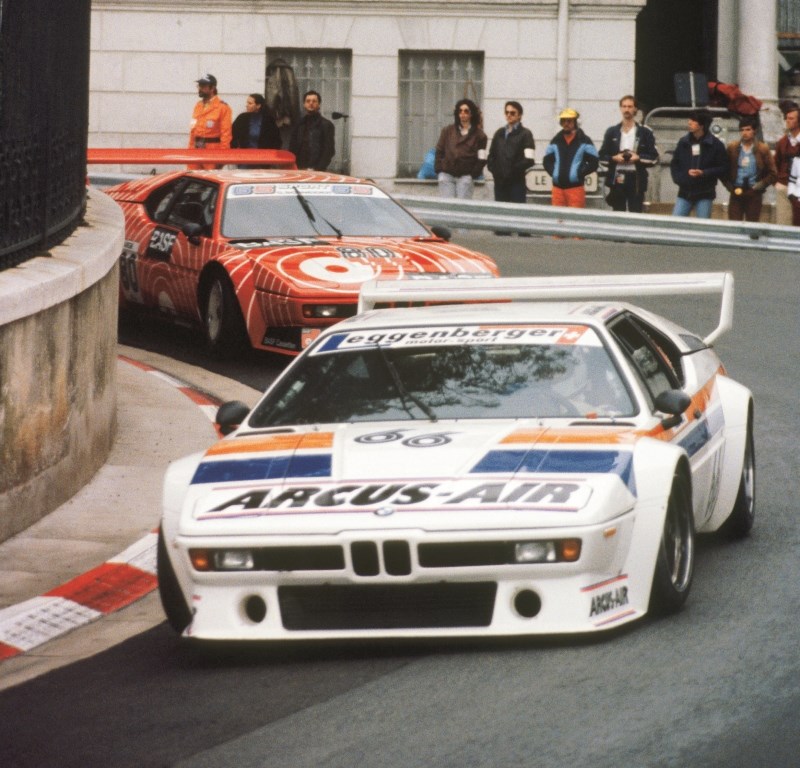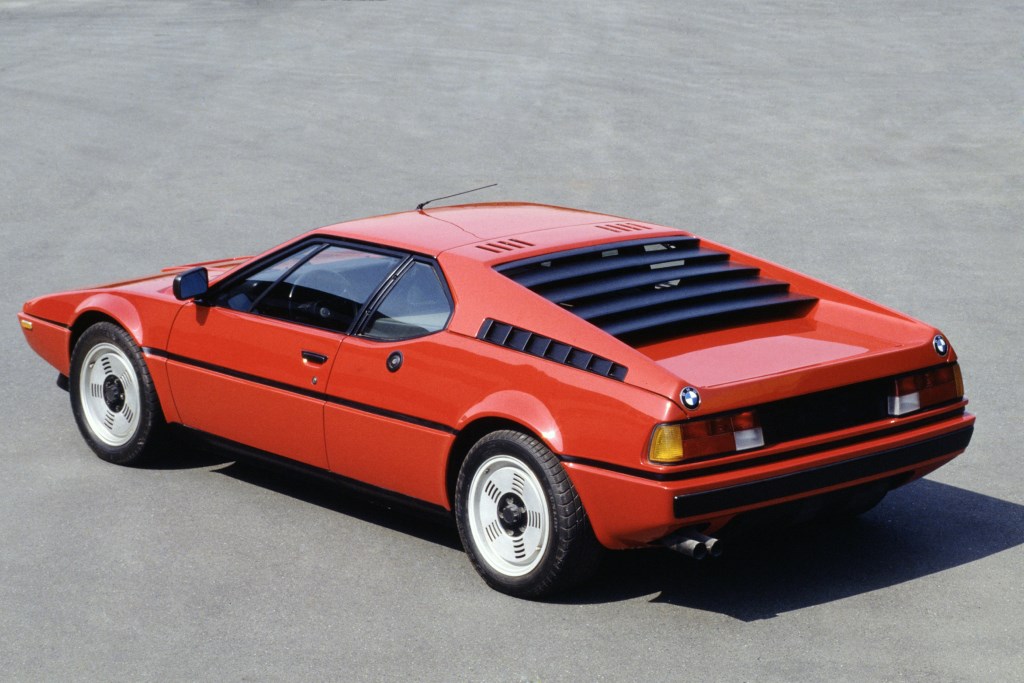
With the M1, BMW had a winning machine that did little racing in the end, while its 'civilian' version did not really find its clientele because of its high price.
In the early '60s, BMW gained considerable popularity with the 'Neue Klasse', a range of mid-sized saloons that bridged the gap between the small 700 and the old-fashioned, baroque 501/502. These well-designed cars were soon joined by the 1602, 1802 and other more compact 2002s, which showed real potential in competition thanks to their resourceful powertrains.
It was after a number of victories that the company's management put some of its engineers in charge of a competition department called Motorsport. Following the success of the 3.0 CSL coupé, this special division was given its first project to complete from start to finish. It was the E26, a car designed to be raced on circuits in Groups 4 and 5, and 400 of which had to be built in order to be homologated.

Italian design
Unlike other BMW sports cars, the e26 was not a production car from which a sports version had been extrapolated: the opposite was true. The Ital Design studio and its head, Giugiaro, were called in to design the lines of this model, which was based on a tubular chassis developed by Lamborghini. Motorsport's main work was devoted to the mechanical aspects.
Perfectly in tune with the times, Giugiaro's design is a marvel of purity. Made from fibreglass, the bodywork is highly aerodynamic and the mechanical layout in a central rear position was a first for BMW. As was the fashion in the mid-'70s, many of the decorative elements were painted matt black, such as the fins above the engine compartment, an element that would later be used on many models.

For all purposes
While the civilian version of the e26 was sober and fluid, the competition versions were much more exuberant, with large aerodynamic appendages, oversized air intakes and wing extensions to accommodate much wider wheels. The M1 was finally unveiled at the Paris Motor Show in October 1978. This supercar immediately turned heads with its incredible lines and first-rate performance.
The 'civilian' model featured a 3.5-litre in-line 6-cylinder engine fitted with a 4-valve-per-cylinder cylinder head. Equipped with Kugelfischer Bosch mechanical fuel injection, it develops 277 bhp and 330 Nm. It accelerates from 0 to 100 km/h in 5.6 seconds and has a top speed of 262 km/h. In the racing versions, the block got bigger valves, special pistons, a modified camshaft and much more, to give it 490 bhp. In Group 5, it is fitted with a turbocharger, boosting its power to almost 850 bhp!

Unfortunately, homologation took a long time and was not completed until 1979. It was then impossible for BMW to enter its car in competition, as it had not yet been homologated due to insufficient series production. Developed by Lamborghini, the chassis was finally built by Baur because of problems at the Italian firm.
The M1 was very expensive to produce, which was reflected in a selling price that was higher than that of a Lamborghini Countach. To top it all off, BMW lost interest in Groups 4 and 5 because the FIA was planning to abolish these two classes in competition. The die was cast for the M1, of which only 477 were built, of which 399 were road-going versions.






















